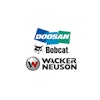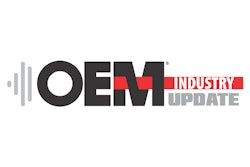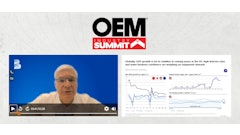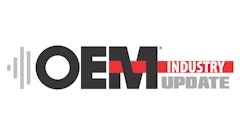
The off-highway equipment market entered the second quarter of 2025 in a heightened state of confusion and uncertainty. The first half of 2025 was universally expected to be weak reflecting projected slowing of U.S. economic growth, expected sticky inflation, elevated interest rates, compounded by significantly excess inventories in virtually all markets.
A modicum of hope was building that the sector was approaching a trough around mid-year based on some positive signs for U.S. manufacturing in Q1 2025. The Institute for Supply Management (ISM) Manufacturer Purchasing Managers Index (PMI) turned modestly positive for the first time in 26 months, global manufacturing showed modest expansion, inflation has cooled somewhat, and most manufacturing sectors expected some resolution of the new administration policies related to the Biden-era spending spree in the Inflation Reduction Act, CHIPS Act and the Infrastructure Investment and Jobs Act.
As Q1 2025 ended, there were heightened signs of significant political activity which could have substantial impact on the outlook for the remainder of the year on the off-highway markets, the manufacturing sector and the potential growth of the U.S. economy. The proposed One Big Beautiful Bill Act on tax and spending reduction and reciprocal tariff policies set off growing skepticism and fear of their impact on virtually all end market forecasts. Immigration uncertainty and accelerating deportations threatened labor availability. Global manufacturing began to soften, and the ISM Manufacturing PMI fell back below expansion levels.
This was followed by April 2, supposedly “Liberation Day,” which set off a seismic reaction to the potential changes in U.S. government trade policies. Significant confusion and uncertainty have been created by the new tariffs, ongoing trade negotiations, and the unfolding tax bill compounded by the continuing Legal roadblocks set up by numerous court rulings. The negative -0.2% GDP (revised) reported for Q1 2025 heightened the fear of recession though the negative print was mostly caused by a 42.6% surge in imports reflecting the fear of tariffs; adjusted Q1 2025 gross domestic product (GDP) was more likely around 3%. To add to the confusion, the Federal Reserve Bank of Atlanta raised its forecast for Q2 2025 GDP to 4.6%, the same day that the Organisation for Economic Co-operation and Development (OECD) reduced its U.S. GDP growth forecast to 1.6% in 2025 and 1.5% in 2026, and The Wall Street Journal consensus economic forecast for 2025 U.S. GDP fell under 1%.
The probability that any material insight into the timing of the resolution of any of the numerous issues remains highly uncertain. One thing seems clear, it’s going to take significantly more time to find solutions to these problems. For example, there are workarounds for the U.S. legal tariff fight using existing trade laws: Section 122 of Trade Act of 1974 (up to 15% tariff for 150 days); Section 232 (designate other national security sectors in addition to steel, aluminum and autos); Section 301 (investigation of sectors); and Section 338 of the Tariff Act of 1930 (up to 50% tariffs on imports for countries that discriminate against the U.S.).
Bottom line is to hope that the off-highway markets do bottom by mid-year and muddle through into likely 2026 awaiting resolution of the numerous issues impacting investment-making decisions.
Construction Equipment: Political Issues Can Dampen Any Recovery
Entering 2025, the construction sector was braced for a weak first half as construction spending continued to soften reflecting the fear of a slowing economy, higher interest rates for longer and sticky inflation. More importantly, manufacturers reacted to the glut of inventory focusing on inventory liquidation spurred by merchandising programs and targeted price discounts.
Demand in Q1 2025 for construction equipment came in somewhat better than manufacturers expected. Most manufacturers therefore continued their expectation of a relatively flat 2025 for global construction activity with a modest decline in the U.S. construction equipment manufactures reiterated their forecasts for a 5% to 10% revenue decline in 2025 in the U.S. and flat to down 5% globally.
However, the sharp rise in political issues has raised the level of caution for construction equipment companies. While the outlook for economic growth and higher-than-expected interest rates has always been a concern, construction exposure to international trade is about 10%, like most U.S. industry, according to a ConstructConnect conference presentation given by Kermit Baker, chief economist of The American Institute of Architects (AIA). However, institutional projects tend to be greater exposed led by educational and health care segments, which are above 25%. It’s highly likely that higher tariffs will raise costs and increase the inflation risk.
In addition, 3 million (about 25%) of the 12 million construction workers in this country are foreign born, of which 1.5 million are undocumented. Any reduction of immigration could exacerbate the shortage of construction workers which is estimated at near a half a million workers.
In sum construction activity is being driven by data centers as well as power and infrastructure. These segments have driven the construction sector backlog which is now softening somewhat. Manufacturing construction projects cancelation and deferrals are now outweighing new starts. Construction equipment manufacturers need to be ready if construction activity begins to wane because of the difficult political environment. It won’t take much for the forecast modest 5% to 10% decline to at least double.
Farm Equipment: Any Recovery May have Been Delayed Until Next Year
Farm equipment manufacturers expected a very weak first half of 2025 with production down sharply to reduce new and used inventories led by a 26% decline on production at CNH and 33% at AGCO. Actual financial results for manufacturers came in somewhat better than expected reflecting favorable pricing, favorable product costs and greater efficiencies which help offset production cuts and the initial impact of tariffs.
Nevertheless, with inventories still elevated, the industry has slightly tweaked downward its weak forecast for 2025 of a decline of 25% to 35% for large tractors and combines, a decline of 5% to 15% for small tractors and flat to down 10% globally.
With farm equipment sales projected to fall to about 85% of mid-cycle demand, the expectation was that demand in the industry will bottom in mid-year setting the stage for a recovery when fundamentals improve. Hope was building for a possible improvement in demand in the second half of 2025 helped by a dramatic surge in government payments to $42.4 billion (versus $9.6 billion in 2024).
That hope seems to be fading with the heightened political activity since the beginning of Q2 2025 particularly related to reciprocal tariffs. Purdue University/CME Group Ag Economy Barometer indicates farmer sentiment has continued to improve, reflecting a more optimistic outlook for exports and a less negative view on how tariffs will impact 2025 income. The farm capital index has come off its recent high to 55, but that is still well above the 35-37 index level of the past three years.
Recent events on tariffs and immigration would seem to dampen the optimism. Farm equipment is vulnerable to reciprocal tariffs (both imports and exports), rising material prices (especially steel) and availability of farm labor. All major manufacturers are exposed to imports of machines and parts from abroad (AGCO most vulnerable). Deere has included a $500 million impact of tariffs in its outlook; in early June Deere announce another round of layoffs at three of its major manufacturing plants.
The farm equipment sector might still trough in mid-year, but its likely that any material improvement has been postponed into 2026. Weather and the resolution of the tariff problem are the key variables to watch.
Mining Equipment: Sideway Demand at High Levels
Economic forecasts for the mining equipment sector projected a softening of expenditures from 2024 to 2025 after the mini-boom post-COVID from 2021 to 2024. Hence it was no surprise that the softness in sales at the end of 2024 continued in the first quarter of 2025. The modest decline reflected lower sales to end users led by Australia and inventory liquidation.
The softness will likely continue with inventories still elevated and global projects slowing a bit reflecting slowing global growth, elevated interest rates, and uncertain tariff policies especially in steel, an uncertain green energy policy especially for electric vehicles (EVs).
Most capital expenditures today are focused on supporting domestic supply chain, critical materials for national security, improving efficiency, cost savings and investing in automation. Mining projects and spending in 2025 appear to be moving sideways but remaining at a high level.
Mining Equipment Sector: Long-Term Growth on a Roller Coaster Ride
The famous philosopher Linus van Pelt from the comic strip Peanuts, who once said, “There is no heavier burden than a great potential,” may have been thinking of the mining sector. Virtually all consulting firms who focus on mining would argue that this is a great time to be a mining company. Demand for global mining equipment is expected to grow at least 5% to 6% to as much as 8% over the next 5 to 10 years or more. The International Energy Agency (IEA) projects copper demand to be up 50%, nickel 2x and lithium 11x.
The problem is not whether the demand drivers for mining are real. The industry is highly cyclical, projects have long lead times and are capital intensive, the industry can go from shortage to excess, and politics and economic cycles can substantially impact the sector.
As Barron’s recently pointed out, one major source of cash flow has typically been iron ore, particularly for Industry giants BHP and Rio Tinto. However, a slowing global economy and the internal real estate crash on the largest buyer China has contributed to a major downward 20% price swing for iron ore.
Many of the greenfield projects to meet the demand for critical metals are extremely capital intensive. There aren’t many companies like BHP and Rio Tinto besides state owned entities with the ability to meet the $10 billion capital requirement.
A good example is the $10 billion investment by Rio Tinto in lithium to meet the projected surging demand from EV batteries and electronics, including phones and laptops, etc. However, since its 2022 peak, lithium prices have declined 90% as global capacity surged, and politics impacted the global movement toward EVs particularly in the U.S.
Mining equipment demand has a very good base globally. Many of the mines in existence have matured requiring new investments for efficiency, cost reduction and automation. New prospects tend to be more remote placing a premium on efficiency and automation.
The demands on the mining sector over the next 25 years are potentially enormous, and being on the right side of the supply demand equation can be extremely lucrative. Acquisitions and mergers are likely in the future and investment to improve profitability will always be sought by the industry participants. Suppliers of mining equipment should prosper over the next several decades, even if it is a roller coaster ride.



![Hcm Ax Landcros Press Release[32] jpg](https://img.oemoffhighway.com/mindful/acbm/workspaces/default/uploads/2025/11/hcmaxlandcros-press-release32jpg.mAEgsolr89.jpg?auto=format%2Ccompress&fit=crop&h=100&q=70&w=100)







![Hcm Ax Landcros Press Release[32] jpg](https://img.oemoffhighway.com/mindful/acbm/workspaces/default/uploads/2025/11/hcmaxlandcros-press-release32jpg.mAEgsolr89.jpg?ar=16%3A9&auto=format%2Ccompress&fit=crop&h=135&q=70&w=240)






